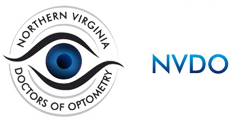Whether it’s sunny or cloudy outdoors, you must wear your sunglasses to protect your eyes from ultraviolet (UV) radiation. The sun’s UV rays can cause various eye conditions, some of which can affect your vision permanently.

However, it’s easy to mistake dark-tinted sunglasses for offering the best UV protection. This isn’t always true since lens tint is not a reliable indication of whether your sunglasses can offer full protection against UV rays.
What to Look for in Sunglasses
UV-protective sunglasses can block at least 75% to 90% of visible light and offer UVA and UVB protection. But ideally, you want shades that offer UV 400 protection. UV 400 means the sunglasses can block nearly 100% of the sun’s UV rays. So, when shopping for sunglasses, check their label, and see how much UV protection they provide. Choose sunglasses with labels specifying 100% protection against UVA and UVB rays.
Furthermore, for better eye protection, you might want to opt for sunglasses with larger lenses or wraparound frames. Polarized lenses aren’t necessarily UV-protective, but they reduce glare from reflected light.
Testing Your Sunglasses
Eye care professionals use a photometer to test and measure the UV-blocking capability of sunglasses. But you can also test your sunglasses at home if you have a UV flashlight.
Simply shine the UV flashlight onto a dollar bill, and you’ll see the UV-fluorescent fibers in the paper money glow. Then, place your sunglasses between the UV flashlight and dollar bill. If the UV light caused the fibers to glow after passing through the lens of your sunglasses, it means your shades don’t have enough UV protection.
At Northern Virginia Doctors of Optometry, we’ll help you find UV-protective sunglasses that match your style and needs. We also offer other services, including vision therapy, pediatric eye care, LASIK eye surgery and more. Call us at (703) 660-9494, or complete our contact form to schedule an appointment. We serve patients in and around Alexandria, VA.



























